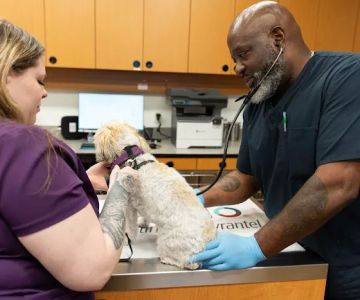How to Recognize and Treat Dental Diseases in Pets
As a pet owner, one of the most overlooked aspects of a pet’s health is their oral hygiene. I remember the first time I noticed my dog, Max, seemed to have trouble eating. I chalked it up to him being picky, but after observing him for a few days, I realized something wasn’t right. His breath had also become unbearable, which made me wonder if there was an underlying issue. A visit to the vet revealed that Max had dental disease, which is incredibly common in pets, especially as they get older. It was an eye-opener for me, and I quickly learned that dental health is just as important for pets as it is for humans. In this article, I’ll share what I’ve learned about recognizing and treating dental diseases in pets, as well as how to keep their teeth and gums healthy for years to come.
1. Understanding Dental Disease in Pets
Dental disease in pets, also known as periodontal disease, is one of the most common health issues affecting pets today. It’s caused by the buildup of plaque and tartar on your pet’s teeth, leading to inflammation of the gums (gingivitis) and, eventually, more serious conditions like tooth loss. I was surprised to learn that dental disease doesn’t just affect a pet’s mouth—it can also lead to systemic problems such as heart disease and kidney failure if left untreated.
There are various stages of dental disease in pets, and the signs can be subtle at first. This is why regular checkups and being attentive to changes in your pet’s behavior are key to early detection. Dental disease typically progresses from mild gingivitis to more severe stages, where the infection can spread to the roots of the teeth and the jawbone. If untreated, this can result in tooth loss, pain, and difficulty eating.
2. Recognizing the Symptoms of Dental Diseases in Pets
Being able to recognize the symptoms of dental disease in pets is crucial for prompt treatment. Some of the signs that may indicate your pet has dental issues include:
- Bad Breath (Halitosis): If your pet’s breath smells unusually foul, it could be a sign of dental disease. This is often caused by the bacteria that accumulate on the teeth and gums.
- Difficulty Eating or Chewing: Pets with dental pain may hesitate to eat, chew on one side of their mouth, or avoid certain foods altogether.
- Excessive Drooling: Increased salivation, especially when accompanied by bad breath, may indicate a dental problem.
- Red or Swollen Gums: Gingivitis, or inflammation of the gums, often causes the gums to appear red and swollen. You may notice that your pet’s gums bleed when touched.
- Loose or Missing Teeth: Advanced dental disease can result in loose teeth or even tooth loss, which can be painful for your pet.
- Behavioral Changes: Pets with dental pain may become more irritable or withdrawn, and they may avoid being petted around their face or mouth.
If you notice any of these symptoms, it’s important to consult with a veterinarian for a full examination and diagnosis. Dental disease is progressive, so catching it early can prevent more severe health issues later on.
3. The Importance of Regular Veterinary Checkups
Regular veterinary checkups are essential for detecting dental diseases before they become severe. At my vet, Max’s annual checkup includes a dental examination where they check for signs of tartar buildup, gum recession, and other dental issues. Most pets won’t show obvious signs of dental disease until it’s too late, so a professional checkup is the best way to stay ahead of the problem.
During these exams, the vet may recommend professional cleanings, which are done under anesthesia to ensure your pet’s safety. The cleaning process involves scaling and polishing the teeth to remove plaque and tartar, which are the main culprits of dental disease. This procedure is essential for pets, especially older ones, as their risk for dental issues increases with age.
4. Treatment Options for Dental Diseases in Pets
If your pet has been diagnosed with dental disease, there are several treatment options available, depending on the severity of the condition. For pets with mild to moderate gingivitis, a professional cleaning followed by regular at-home care (such as brushing your pet’s teeth) is often enough to restore their dental health.
For more severe cases, treatment may include:
- Tooth Extractions: If a tooth is severely infected or loose, the vet may recommend extracting it to prevent further pain or infection.
- Antibiotics: In cases where there’s an active infection, antibiotics may be prescribed to treat the infection and prevent it from spreading.
- Specialized Dental Treatments: For pets with advanced dental disease, the vet may recommend specialized treatments such as root planing or periodontal therapy to address deeper infections and save teeth.
After treatment, your pet will need ongoing care, including regular checkups and possibly changes to their diet to help maintain their oral health.
5. Preventing Dental Disease in Pets
Prevention is always better than treatment when it comes to dental health. I’ve learned that the key to preventing dental disease in pets is consistent at-home care. Brushing your pet’s teeth is the most effective way to prevent plaque and tartar buildup. While this may seem like a daunting task at first, there are pet-friendly toothbrushes and toothpastes available that make the process easier and more enjoyable for both you and your pet.
In addition to brushing, providing dental chews and toys can help reduce plaque buildup and keep your pet’s teeth clean. Some pet foods are also formulated to help maintain oral health, as they are designed to reduce tartar accumulation and promote healthy gums. Regular checkups with your vet, along with a consistent dental care routine at home, will go a long way in preventing dental disease.
6. Real-Life Example: How Dental Care Saved My Pet’s Health
When Max was diagnosed with early-stage periodontal disease, I was initially overwhelmed. But after a professional cleaning and making sure to brush his teeth regularly, his condition improved significantly. Not only did his breath improve, but he also became more active and seemed more comfortable overall. This experience taught me just how important dental care is for pets, and I now make it a priority to take care of his teeth regularly.
7. Final Thoughts: Prioritize Your Pet’s Oral Health
Dental diseases in pets are common but preventable with the right care and attention. As a pet owner, it’s essential to recognize the signs of dental disease early on and take action to treat and prevent it. Regular veterinary checkups, good at-home dental hygiene, and a healthy diet all contribute to your pet’s overall well-being and can help avoid the pain and complications that come with dental disease.
If you’re concerned about your pet’s dental health or need advice on how to care for their teeth, I highly recommend visiting a trusted veterinary clinic like Hidden Brook Veterinary, where the team can guide you through the best dental care practices and help you keep your pet’s teeth in top condition.











